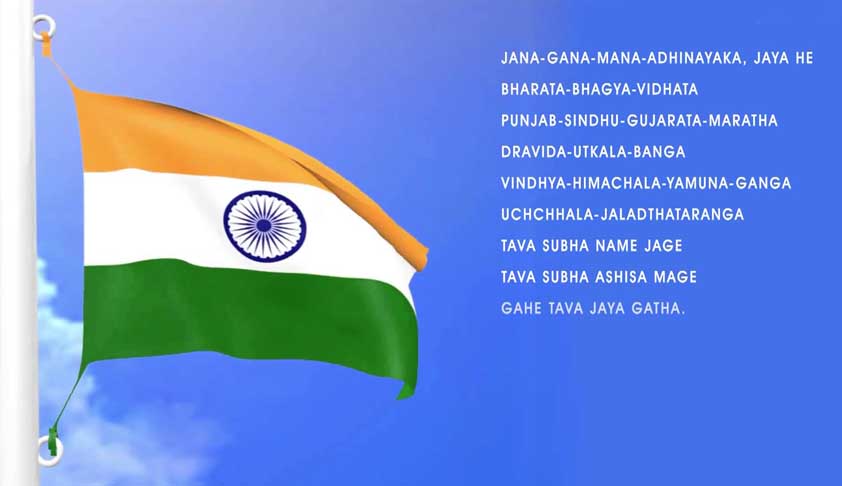
As to what this message conveys to the Sindhis of India is another matter, as long as their origins in a hostile region are not held against them. He is right in noticing the contrast, but unphilosophical and humourless in actually pushing for a solution. If Bora had paid attention to the anomalies of nation-making, he would have seen this aspect, and perhaps felt bemusement at these ironies. It is a poem, and like all poetry, it has philosophical truth rather than historical accuracy. This is the tragic irony of Partition, and the national anthem reminds us of these entanglements of history. Interestingly enough, the Sindh they left behind has its own ambivalent relation with the state of Pakistan.

Not having a territory in India has created, now almost irrevocably, a fragmented nature of history and language among the Sindhis in India.

It went in its entirety to Pakistan, rendering millions of Sindhi refugees stateless and dispersed across different parts of India. Unlike Punjab and Bengal, Sindh was not divided at the time of Partition. I should perhaps now speak as a Sindhi, whose parents came from the ‘hostile’ region. And, when accompanied with a demand to remove a ‘hostile’ region that is not even ‘a part of India’, it seeks to erase the history of both togetherness and division. This spirit, although ensuing from a good place (as I mentioned before), is ominous: It shows impatience with philosophical gaps in its desire for procedural perfection. In erasing that gap, we make the past obedient to the present, serving all its needs.

The gap between the national anthem’s cartography and our own times reminds us that nations evolve and change, boundaries dissolve and form and that the truth of British India is different from today. On that basis, one may even argue that regions assuming statehood after independence – Haryana, Telangana, Chhattisgarh and many others – may also be included. It must become a smooth and suitable translation that does not keep the original tethered to its moment, but one that includes – like a school roster – all emergent realities as and when they take place.Īnother politician, Anil Vij, a minister from Haryana, has also said that Sindh must be removed. The incompleteness of the poem, its imperfection as a cartographic document, and its reality as an artifact of its own historical time must be erased to make it perfect, malleable, and complete for our times.
#INDIAN NATIONAL ANTHEM MEANING FOR FREE#
In effect, this ‘original’ is available for free and frequent translations, never mind whether Tagore would have been happy with it. We are told that this provision exists once a poem has been adopted by the Constitution. Fair enough.īut why is it not possible to do that without deleting ‘Sindh’? Did Bora worry that ‘Punjab, Sindh, Gujarat, Maratha.’ would have too many syllabic sounds, and it was prudent to only replace, and not add? Or would some rhythmic nature of the anthem go away by adding too many regions? Or did the absence of the northeast (should that be a homogenous and acceptable category for this purpose) become particularly conspicuous in the face of a territory that now belongs to Pakistan?Ĭhanging words in the national anthem, as if it were a document in need of timely amendment, disregards its existence as a poem by Rabindranath Tagore and an associated ethic that you do not take other people’s poetry and make changes to them. Given the history of disaffection that the northeast has experienced from the Indian state, this is also a political assertion. The resolution also stems, at least in this case, from the desire to be mirrored in the state’s symbolic imagery. It must match region by region, place by place to what India is today. The logic of Bora’s resolution rests upon an assumption that it must be a cartographic representation of contemporary India. That one might continue to hear this again was evident in another writer’s response, who said to me in Sindhi: “ Disa na…rahi rahi uho ii raag.” (The Hindi equivalent would be ‘ Dekho to sahi, baar baar wahi raag’, or in English, ‘look, it is the same tune over and over again’).īut ‘rahi rahi’ in Sindhi means both repetition and intermittence, which is to say this demand is made, is forgotten or ignored, and then it comes back again.Įxcept, this time, it is accompanied by a demand to include the northeast of India in the national anthem. The feeling was one of tiresomeness at having heard this before. This time, it was a demand made by Congress MP Ripun Bora.

When the news about a resolution in the Rajya Sabha seeking an amendment to the national anthem and deleting ‘Sindh’ landed in my inbox, my instinctive reaction was ‘not again’. The demand keeps popping up again and again. A Congress MP has demanded that ‘Sindh’ must be removed from the national anthem and replaced with the northeast.


 0 kommentar(er)
0 kommentar(er)
